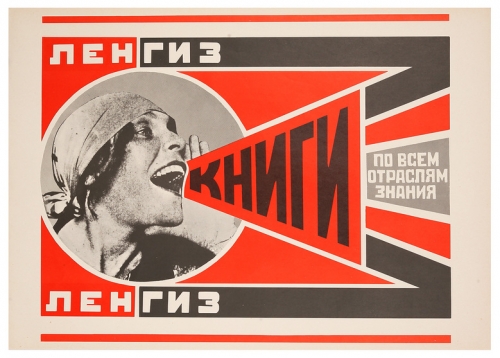All Power to the Ideals!

What kind of cultural celebration, Mark Perryman asks, do the art and the politics of the Russian Revolution deserve?
A century ago, on 23rd February 1917, Russian women workers marched out in protest from the St Petersburg factories to defy Cossacks armed with swords, and took control of the city’s streets. In less than a week they had been joined by hundreds of thousands of other workers. The St Petersburg Military Garrison mutinied in their support. A rebellion led by women for people’s power had begun.

The 1917 centenary will be one of the publishing events of the year, with writers from Left and Right battling in words over the legacy. The Royal Academy, the Design Museum, British Library and Tate Modern will all host major exhibitions of Revolutionary-era art. In October Philosophy Football, in association with the RMT, will present a night out at London’s Rich Mix Arts Centre ‘To Shake the World’ celebrating the culture of the Revolution. On the same day, Michael Rosen and friends will host an event for families featuring the children’s books of the revolution. And there will even be a guided history walk to visit the hidden history of connections between London’s East End and 1917.
Not all agree that 1917 deserves any kind of celebration at all. Art critic Jonathan Jones writing in the Guardian rages against the spectacle of the Royal Academy ‘Revolution : Russian Art 1917-1932’ exhibition because “The way we glibly admire Russian art from the age of Lenin sentimentalises one of the most murderous chapters in human history.” Unless the Royal Academy (the clue might be in the title, Jonathan) has reinvented itself as a bastion of Marxism-Leninism it is most unlikely they will be sentimentalising communism. Nor, given their reputation, is glibness likely to characterise how they showcase the art via context.
It is undeniable the Russian Revolution cost lives, millions of lives. It took place in the era of World War One when millions of lives were being lost on the fields of France too. And this was the age of Empire with millions more lives sacrificed in the cause of imperial plunder and subjugation across the world. All three events, 1917, WWI, Empire were bloody. None should be sentimentalised. Each needs to be understood – anything else is the denial of history.
In ’89 the fall of the Berlin Wall was famously claimed to mark ‘the end of history’. Yet a generation later the cause of radical change in an era of #dumptrump and #chaoticbrexit remains .The strength of the connections between these 2017 social movements and 1917 are there to be argued over, the history contested but to dismiss the revolution of a century ago as either wholly irrelevant or entirely the model for change now would be both arrogant nd unwise.
The crucial point of the October Revolution was reached some seven months after those women workers first marched when the Russian Royal Family’s Winter Palace was successfully stormed. The signal for the assault to begin was he firing of a blank from the bow gun of the Russian warship, Aurora. The ship’s crew, inspired by the protesting women had mutinied back in February to side with the Bolsheviks.

And what followed 1917 was a movement, in Russia but beyond too, that unleashed an unprecedented wave of creative imagination. It was a cultural revolution. Today the art of the period has become chic, fit to hang on the most respected gallery walls, treated as historic artefact and not a tool of revolutionary change. Of course nobody would decry the simplistic beauty of Lissitzky’s Red Wedge - which of course inspires this website's banner - but to divorce the aesthetic of this, and hundreds and thousands of other pieces from a period when art, poetry, music, film, theatre and more went into production with a revolutionary impulse, would be a travesty.
Perhaps the most famous cultural movement out of 1917 was constructivism. But these weren’t shapes artfully assembled without purpose. This was construction with designs on everlasting change, permanent revolution. Too often this is represented by both the establishment, and reproduced too by those who fail to learn the lessons of 1917’s failings, as a top down, didactic project. Rather at its best, politically and artistically the Russian Revolution was a movement from below, inspired by the human capacity to shake the world in which we live.

This is the point those who decry the 1917 Celebrations miss, and some who join with the commemorations miss it too. This wasn’t a revolution made by Lenin, Trotsky, or Stalin. Though all three played their part of course in what it was, and what it became. But most of all this was a revolution made by ordinary people - women factory workers began it, rank and file sailors fired the starting signal. And with their actions and achievements they inspired a vision for a better world. This is what we should celebrate about 1917, and this is what the art of the Russian Revoltuion shows us - the potential that we the people have, together, to effect political change.
This is an amended version of an article which first appeared in the Morning Star. Philosophy Football's 1917 T-shirt range is available here.

Mark Perryman
Mark Perryman is co-founder of the self-styled ‘sporting outfitters of intellectual distinction’ aka Philosophy Football. He is the author of Ingerland: Travels with a Football Nation.